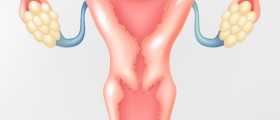
Epidemic keratoconjunctivitis is an infection of the eye caused by adenovirus. The very term epidemic refers to the fact that the condition is highly contagious and may occur in epidemics.
The condition is characterized by a sudden onset. The person develops acute follicular conjunctivitis with symptoms such as watery eyes, hyperemia, chemosis and lymph node enlargement affecting the neck. Apart from affecting the conjunctiva, epidemic keratoconjunctivitis also affects the cornea. Its involvement develops in a form of membranes and pseudomembranes and there may also be superficial keratitis or deep epithelial defects.
Fortunately, epidemic keratoconjunctivitis is a self-limiting condition that generally withdraws within 1-3 weeks after the onset. There are no severe complications associated with the condition.
Spread of the Infection
It is estimated that at least 19 serotypes of adenovirus may cause epidemic keratoconjunctivitis. The infection predominantly occurs in close institutions like schools, hospitals, nursing homes etc. It is easily transmitted after a direct contact with eye secretions. Furthermore, one may contract the infection after being exposed to air droplets containing the virus or if the virus is found in swimming pools one is swimming in.
The infection is also frequently spread in ophthalmology outpatient clinics where people may come in contact with contaminated diagnostic instruments.
The infection affects both gender equally and is present in people of all ages with slightly elevated incidence rate among adults.
Epidemic Keratoconjunctivitis Clinical Characteristics
The very infection may be preceded by flu-like symptoms such as malaise, respiratory symptoms, fever and chills, myalgia, nausea, vomiting and diarrhea. Patients may additionally confirm they have had a recent eye examination. Exposure to secretions of the infected individuals may be reported as well.
Symptoms and signs of epidemic keratoconjunctivitis develop after 2-14 days. Once they develop, they tend to linger for approximately 2 weeks.
Eye irritation and inflammation develop in a form of soreness, red eye, photophobia, foreign body sensation and excessive tear production (watery eyes). Decreased visual acuity and pain may occur only in severe form of the disease.
During physical and eye examination doctors can easily notice classic characteristics of keratoconjunctivitis. There are also swelling and erythema of the eyelid, conjunctival hyperemia, chemosis, follicular reaction, papillary hypertrophy and subconjunctival hemorrhage.
Corneal involvement is generally mild in nature. It develops 3-4 days after the onset of the disease and may linger up to 2-3 weeks. Focal epithelial keratitis and subepithelial infiltrates are two characteristics affecting the cornea.
Diagnosis of the condition is set thanks to clinical findings. Treatment is symptomatic and includes cold compresses and artificial tears. Only severe cases may require mild topical corticosteroids.

















Your thoughts on this
Loading...